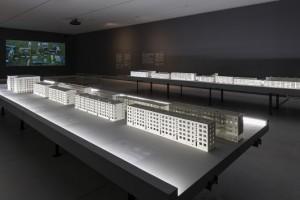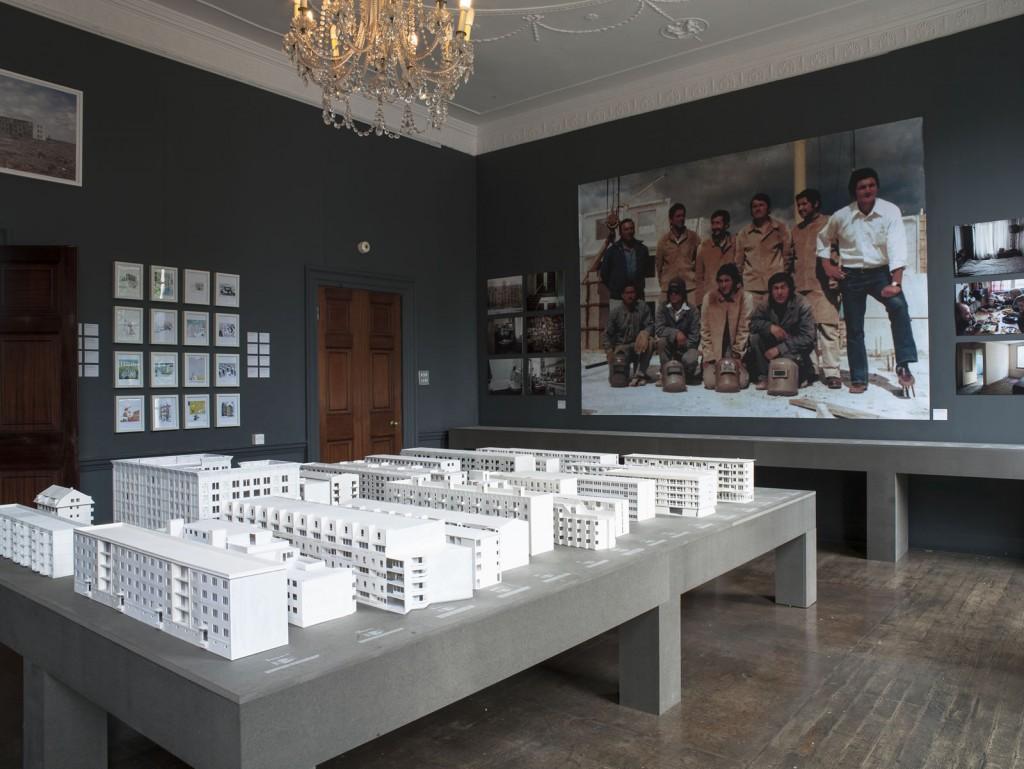The Tel Aviv Museum of Art is featuring an exhibit that includes 28 3D printed architectural models. According to the museum website, “Production Routes” examines the 50-year-long “transnational circulation of prefabricated large concrete panels, patented between 1931 and 1981, weaving them into a historical collage of ambitions and short-lived enthusiasm for utopian dreams.”
The exhibit includes two feature films, one video art installation, and a 3D printed model exhibition that “portray the ambivalence of modern housing projects, which sought to promote equality while reducing life forms to an assembly line.”
Modern architecture is presented as a double edged sword, as the social utopian vision of a kind of universal aesthetic and built environment equality becomes haunted by the alienated conformity of modern mass production. In addition to two films and one video-art installation on the topic — “Modernity: Promise or Menace,” “The Architects,” and “Friedrich Milke: Discipline and Passion, The Science of Stairs” — viewers can also experience the wide-scale impact of modernist architectural vision concretely via 3D models.
Chilean artists Pedro Alonso and Hugo Palmarola bring their “28 Large Concrete Panel Systems” to the exhibit with the hopes of educating the public on a much overlooked aspect of global modernist architecture. Although not widely studied or commented on in official accounts of modern architecture, large concrete panel systems were a central part of architecture’s modernization and industrialization.
Concrete panel development transferred building material production from on-site to the factory floor, and the exhibit shows how the panel became a symbol of new architectural values that triggered political, aesthetic, and ideological debates. What do people want to make? What do people want to look at? What is the purpose of mass production? What connects us, globally?
The panels that inspired these 28 models were mass-distributed all over the world, and were adapted in many different cultural and geographical contexts. Globally, 170 million apartments worldwide were produced using these concrete panels and you can get a feel for this architectural transmission of materials if you do a lot of traveling. Ultimately, the goal of Alonso and Palmarola’s contribution to the “Production Routes” exhibit is to show that it was the workers and people who absorbed this production of global modernist architecture. For the artists, these concrete panels indicate how ideologies and mechanisms of power reached across continents and oceans. They are, in fact, the beginnings of a homogenization of global architectural aesthetics, whereby generic housing, generic offices, and generic cities were eventually produced as large-scale industrial projects.
global modernist architecture. For the artists, these concrete panels indicate how ideologies and mechanisms of power reached across continents and oceans. They are, in fact, the beginnings of a homogenization of global architectural aesthetics, whereby generic housing, generic offices, and generic cities were eventually produced as large-scale industrial projects.
But for a time period, before the 1980s saw a shift in geopolitical relations with the fall of the Soviet Union, there was a hopeful universalization as panels were transported in various relational circuits. An example of one such circuit focused on by the artists are the systems exported from Soviet Russia to Cuba and then onto Chile in the 1960s and 1970s. Alonso and Palmarola ask how these older modernist building projects compare to today’s homogenized and privately financed development projects.
The Tel Aviv Museum of Art is one of Israel’s leading cultural institutions, and it is an excellent institution to host this exciting exhibit. It includes modern and contemporary art departments, photography, architecture, and design departments, and its Old Masters department covers 16th to the 19th century art. The “Production Routes” exhibit will be open until May 2, 2015. Let us know if you’ll be visiting this exhibit in the Production Routes at Tel Aviv Museum of Art forum thread over at 3DPB.com.
Subscribe to Our Email Newsletter
Stay up-to-date on all the latest news from the 3D printing industry and receive information and offers from third party vendors.
You May Also Like
3D Printing Financials: Steakholder Foods Balances Losses and 3D Printed Tech Advances in 2023
A pioneer in the field of 3D printed meat and fish, Steakholder Foods (Nasdaq: STKH) disclosed its 2023 financial results, a year highlighted by technological progress but overshadowed by financial...
3D Printing Financials: Protolabs’ Q1 3D Printing Revenue is Flat, Company Advances in Technology Push
Protolabs (NYSE: PRLB) has kicked off 2024 with a mild boost in revenue, revealing how the Minnesota-based company manages to adapt and thrive even in uncertain market conditions. While the...
Supply Chain Management and the Role of 3D Printing Digital Inventories
As the additive manufacturing (AM) industry grows beyond its humble roots as a rapid prototyping technology, it has been adopted by some of the world’s leading companies to produce not...
3D Printing Financials: Materialise’s Profitability Amid Revenue Dip in Q1 2024
Materialise (Nasdaq: MTLS) has released its first-quarter earnings for 2024, highlighting a challenging quarter with some key advances despite a dip in revenue. While navigating a mixed performance across its...


































